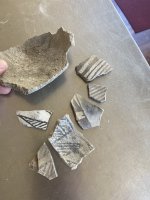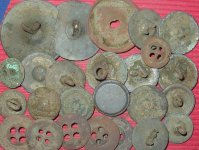monkeys uncle
Full Member
- Mar 26, 2014
- 175
- 145
- Detector(s) used
- Vanquish 440, E-Trac, Fisher F-Pulse pin-pointer
- Primary Interest:
- Other
ETrac newbie here. Can someone explain (layman terms) how Quick Mask or TTF (?) settings help a user detect a good target from among the iron/trash that caused the 'Threshhold' tone to go 'Null' or silent? My limited experience trying to use either certainly seems to help locate a buried target that caused the null...but, said target typically gives an Fe/Co value(s) like 35/47. Something looks/sounds good (Co-47) but, why dig a target that has peaked the iron scale (Fe-35)?? I've got all the nails, horseshoes and barb wire I'll ever need. 
Obviously, I'm not understanding what the machine is trying to tell me. What am I missing?
All replies welcome and thanks in advance.

Obviously, I'm not understanding what the machine is trying to tell me. What am I missing?

All replies welcome and thanks in advance.
Last edited:














